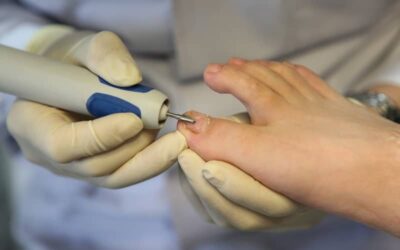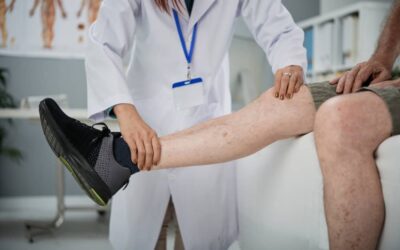A warm mug of hot cocoa with a dash of cinnamon. Your favorite sweater. A lush blanket. A crackling fire. Snowflakes gently floating outside. Ingrown toenails.
Wait, what?
Yes, unfortunately, ingrown toenails are a common wintertime foot ailment. Why is that? What exactly are ingrown nails? What makes winter a tricky time for toenails? And how can you prevent adding “trip to the ingrown toenail podiatrist” to the top of your Christmas list? Let’s find out.
What is an Ingrown Toenail?
An ingrown nail occurs when the nail grows into the soft flesh surrounding it. Ingrown nails are often painful. The area can become red, swollen, and even infected. Ingrown nails are typically on the big toe, but having an ingrown toenail on any other toe is not impossible.
Why Ingrown Toenails Love Winter
When the temperature drops, our lifestyle changes, and that can have a big impact on your feet. Here are some key reasons why ingrown toenails become more prevalent during winter months.
-
No more sandals. In warmer weather, bare feet or open-toed shoes are more common. Your toes get a chance to air out and stretch out instead of being crammed in shoes all day. Airing out your toes allows them to relieve pressure. It also prevents the skin from breaking down as much, which can help discourage infections.
-
Extra socks. You might think you found a cheat code to cold weather by slipping two pairs of socks on your feet, but you are creating an environment where ingrown toenails thrive. When you have extra socks or just extra thick socks, you restrict your toes. The skin and nails press together, which can cause an ingrown toenail.
-
Toenail upkeep. Be honest: are you getting as many pedicures in January as you do in July? When you know others will see your feet, you are more likely to keep up with trimming your toenails and your toenail regimen. If you let your toenails grow longer during the months they aren’t as visible, you are more prone to ingrown toenails.
-
Winter sports. Many winter sports, such as snowboarding, skiing, or skating, have footwear that you generally want snug. The pressure from the footwear can cause the nail to penetrate the skin surrounding the toe.
-
Dry air. The dry air can cause your skin to crack, which can make toes more susceptible to infection. An ingrown toenail that becomes infected will escalate the need for intervention.
Ingrown toenails can also result from an injury to the toes or sports involving a lot of kicking.
How to Prevent Wintertime Ingrown Toenails
An ingrown toenail in winter doesn’t have to be inevitable. You can take some steps to decrease your risk of developing an ingrown toenail this season.
-
Buy bigger boots. You’re going to be wearing a lot of closed-toe shoes during cold months, so choose your shoes wisely. When you are shopping for footwear, choose boots or shoes that have a wide-toe box. This gives your toes ample space instead of putting unnecessary pressure on them.
-
Trim your toenails. Keeping your toenails groomed will help decrease your risk of developing an ingrown toenail. Cut the nail to a comfortable length; nails that are too long or too short can both cause an ingrown toenail. Cutting the nail straight across (instead of curving down on the sides) will also help it be less likely to become an ingrown nail.
-
Air out your toes. Slip out of your socks daily and let your toes breathe, especially if they are perspiring in your two-sock cocoon.
-
Wash your feet regularly. This should go without saying, but wash your feet. With soap. Often. If your feet are dirty, you have a greater chance of developing an infection.
If you are experiencing pain around one or more of your toenails (especially if you see pus or suspect an infection), you should make an appointment with your local podiatrist. A podiatrist can quickly address most ingrown toenails with minimal downtime for you.
Also note that if you have a high A1C due to Type 2 or unmanaged Type 1 diabetes, any foot issues will need to be addressed by a podiatrist as soon as possible.
Winter might be a time that makes you more susceptible to an ingrown toenail, but it is also a great time to elevate your feet and relax after an ingrown toenail procedure. Schedule your appointment today so you can enjoy your Hallmark movie marathon sans ingrown toenails this winter.



